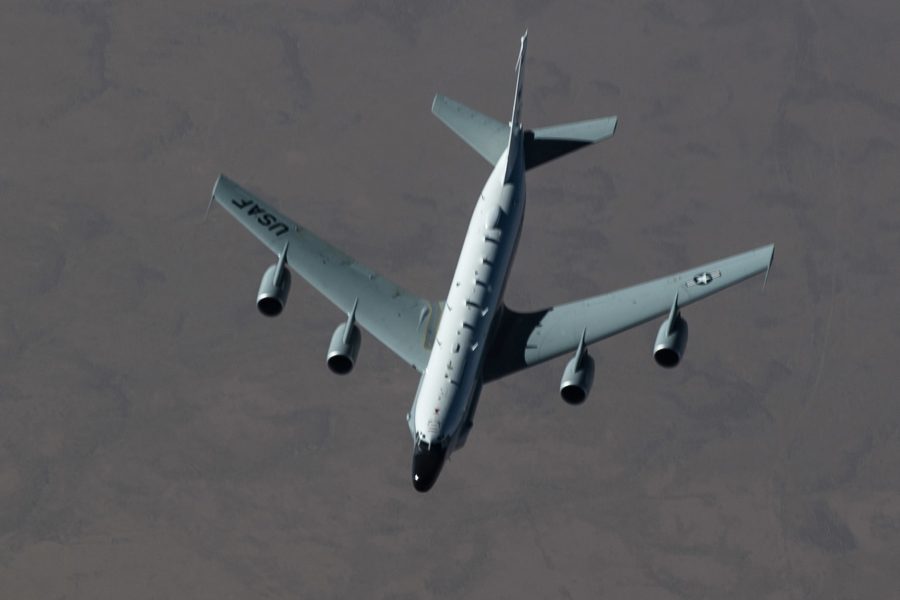The RC-135V/W is tasked with real-time electronic and signals intelligence-gathering, analysis, and dissemination in support of theater and strategic-level commanders. The extensively modified C-135s detect, identify, and geolocate signals throughout the electromagnetic spectrum.
Rivet Joint is mostly used to exploit electronic battlefield intelligence and deliver near-real-time ISR information to tactical forces, combatant commanders, and National Command Authorities.

The British Royal Air Force operates three RC-135W Airseeker aircraft, which are co-manned by USAF/RAF personnel. Onboard capabilities encompass rapid search, detection, measurement, identification, demodulation, geolocation, and fusion of data from potentially thousands of electronic emitters.
Continuous baseline upgrades keep the fleet viable through 2040 and drive standards for Combat Sent/Cobra Ball. Flexible funds permit rapid, variant-specific mods in response to emerging/evolving threats.
The fleet recently underwent Baseline 11/12 upgrades, adding new direction finding COMINT, precision ELINT/SIGINT system integration, wideband SATCOMs, enhanced near real-time data dissemination, as well as new steerable beam antenna, improved weather radar, digital cockpit instruments, and compliant CNS/ATM. Baseline 12 added modernized operator interface, improved dense-signal environment capabilities, increased signal bandwidth/exploitation, added operator 3D maps, and integrated RC-135 with Distributed Common Ground Station (DCGS).
FY21 efforts focus on upgrading Baseline 11 airframes to Baseline 13, sustaining Baseline 12, and upgrading the aircraft’s autopilot. USAF is working to increasingly automate intelligence gathering and employ artificial intelligence and collaboration to speed collection, analysis, and distribution of information.
USAF reversed plans to shift forward-deployed RC-135s from RAF Mildenhall to RAF Fairford in 2023.
Contractors: Boeing (airframe); L3Harris (mission systems).
First Flight: N/A.
Delivered: Circa 1973-99 (continuous equipment updates).
IOC: Circa 1973.
Production: Converted.
Inventory: Eight (RC-135V); nine (RC-135W); three (TC-135W); one (NC-135W).
Operator: ACC, AFMC.
Aircraft Location: Offutt AFB, Neb.; Kadena AB, Japan; RAF Mildenhall, U.K.; RAF Waddington, U.K. (USAF co-manned). Planned: RAF Fairford, U.K.
Active Variants: •RC-135V/W Rivet Joint. Standoff airborne SIGINT variant of the C-135. •TC-135W. Training version of the operational aircraft. •NC-135W. Rivet Joint systems integration testbed operated by AFMC.
Dimensions: Span 131 ft, length 135 ft, height 42 ft.
Weight: Max T-O 297,000 lb.
Power Plant: Four CFM International F108-CF-201 turbofans, each 21,600 lb thrust.
Performance: Speed 500+ mph, range 3,900 miles (farther with air refueling).
Ceiling: 50,000 ft.
Accommodation: Three pilots, two navigators, three EWO, 14 intelligence operators, four airborne maintenance technicians (six additional, if required).
